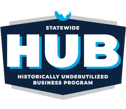A Recap of the May 11th USP <800> Preparedness Lunch + Learn
To start, let’s find out where your healthcare organization stores hazardous drug safety information.
In this webinar, attendees’ responses covered the gamut:
- Health System intranet: 25%
- Spreadsheet: 25%
- SharePoint Drive: 13%
- Electronic health record: 25%
- Hard copy: 13%
While working with our clients to install our software, we have had the unique opportunity to observe how they create access to this critical hazardous drug information. Thanks to our experience with clients, we have helpful information to share with you about storing this information and making it widely available at the point of care to the healthcare workers who depend on it to keep them safe from hazardous drug exposure.
The bottom line:
No matter where or how you store and share critical hazardous drug safety information, it must be accessible to your end users at the point of care.
Where do healthcare workers need to access hazardous drug safety information?
As the poll indicated, this information can be in the hospital intranet, on SharePoint, physician or pharmacist portal, pharmacy or formulary website, and inside the electronic health record (EHR).
Also, it is crucial to ensure healthcare workers have access on their phones, tablets, or other mobile devices.
Not only is it essential to house the information in these places, but to ensure it is actually referred to and followed, you must spend time training healthcare workers on where to find it. If they can't find it, they won’t access it.
In a poll conducted during the webinar, 89% said all staff have electronic access to their organization’s hazardous drug information, and 11% said pharmacy staff only have access to it.
Within our client base, when comparing clients who have our software integrated into the EHR to our clients who don't have our software in the EHR, we found that clinicians are twice as likely to use the safety information if it's at the point of care.
For example, a pharmacist in Houston, Texas, said a nurse needed to administer a hazardous drug to a pediatric patient, but she couldn't find the handling information on their hospital intranet. So what do we all do when we don’t know the answer to a question? We Google! So the nurse Googled it. The information she found on PPE and administering the medication was incorrect. Not a surprise at all, but so scary!
The nurse used the Google information, and only after she administered the medication did she call the pharmacy to ask where to find the hospital’s safety information. Unfortunately, she already exposed herself to a hazardous drug. The next thing you know, she and the pharmacy director and the director of nursing had to meet with the corporate council, risk compliance, and HR to talk about why she hadn't been able to find that information and how to make sure that anyone in that organization could find that information in the future.
Just like we said last week, “It takes a village.” Staying on top of the safety information for all the drugs entering your facility requires a little attention so it's important as a team to train everyone in your organization where to find this information and ensure that it is excessively accessible where and when they need it. To quote Gina Davis from the movie, The Fly, “Be afraid. Be very afraid.”
Where Can Hazardous Drug Safety Information Be Located?
This is an example of one of our clients who has their information on their SharePoint or their hospital's intranet. You don't have to use our software to do this. You can have this on your Excel spreadsheet on your hospital's intranet or a PDF or a Word document.





Here's an example of what this information could look like on your tablet or mobile phone.





This is an example of a pharmacy website or a formulary website. Notice the hazardous drug link on the left side of the screen. The medication carbamazepine has been clicked, and you see the hazardous drug information tied to the pharmacy formulary site.





Here's where you find the information in Epic. If you're an Epic user, you recognize this as the Web Link Resources dropdown.





Here's an example of safety information inside the MAR. We’re looking at carbamazepine, and this client has a link in their MAR, so when they click on this link, it opens the specific information in a new window enabling the nurse to quickly grab that information and move along.





Here’s another example of Epic, showing another way the client has labeled the link differently as “HazD Handling Instructions.” They also have a special icon on their MAR that tells the nurse precisely what NIOSH group this medication belongs to.





Here is a screen for order entry where you can click on the hazardous handling instructions, and it opens a new window for the order entry screen for that specific drug.





This is a link to an image of order verification and dispense prep in Epic. You see where the clinician clicks on the link and then opens the information in a new window where the clinician can get the needed information quickly and move along.





You see the link to Rhazdrugs in the Cerner toolbar, but this could easily say “hazardous drugs,” depending on your organization. When they click the link, it will open that information, and your end user can easily find the safety information they're looking for.





Here’s another image of Cerner. This seems simple, but it is a significant time saver. One of our clients learned how to embed this information at the drug level in Cerner. When the end user clicks on this information in Cerner, they will open up the main page, which could be your main page of hazardous information. In this client's case, it's our website of their hazardous drug database, and it's right inside Cerner.





This final example uses the Cerner Power Chart. From “Links,” it shows all the links available for their organization and for their end users. It is a pretty comprehensive list.





*Remember, your organization may not have Epic, Cerner, or Meditech as an EHR, but if your EHR allows a hyperlink to go inside, we can interface with it. We've found that to be very successful with any EHRs we've worked with.
We hope this look at how other organizations integrate hazardous drug safety information into their EHRs has been helpful!
You can register for the next USP <800> Preparedness Lunch + Learn, where we’ll spend about 30 minutes preparing for the say the inspectors come knocking.
If you’d like to watch a recording of any previous USP <800> Lunch + Learns events, you can access the YouTube videos anytime here.
Be sure to check out the Rpharmy Resource Page with quick links to NIOSH 2016, NIOSH 2020, DrugBank, DailyMed, and much more.


